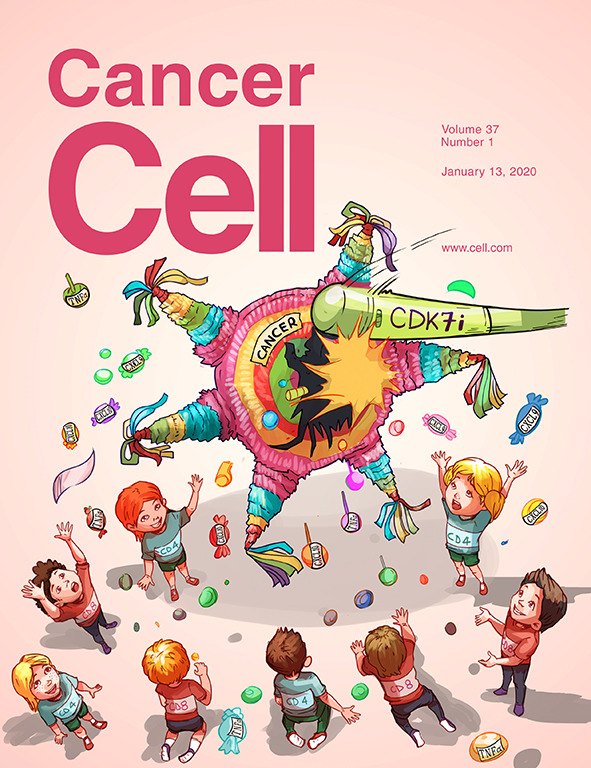ZEB2是控制肿瘤相关巨噬细胞程序的主开关
IF 44.5
1区 医学
Q1 CELL BIOLOGY
引用次数: 0
摘要
肿瘤相关巨噬细胞(TAMs)是肿瘤免疫逃避的关键介质。然而,他们的监管电路和检查点被部分理解。在这里,我们通过将人类肿瘤单细胞RNA测序(scRNA-seq)数据与专用CRISPR筛选相结合,生成了TAM调节网络。利用深度生成模型,我们构建了一个基因扰动网络,将个体候选人与原型TAM函数连接起来。我们确定Zeb2是TAM程序的主要调节因子,协调i型干扰素反应和抗原呈递的抑制以及免疫抑制程序的激活。基因消融ZEB2在染色质、RNA和蛋白质水平上重编程TAM的功能和身份。在富含巨噬细胞的人类肿瘤中,ZEB2表达与不良预后相关。选择性Zeb2在体内靶向重编程tam并调动全身T细胞反应,实现强大的肿瘤清除。总的来说,我们的研究生成了TAM基因回路的详细路线图,并确定ZEB2是具有治疗潜力的主开关。本文章由计算机程序翻译,如有差异,请以英文原文为准。

ZEB2 is a master switch controlling the tumor-associated macrophage program
Tumor-associated macrophages (TAMs) are key mediators of tumor immune evasion. However, their regulatory circuits and checkpoints are partially understood. Here, we generated a TAM regulatory network by integrating human tumors single-cell RNA sequencing (scRNA-seq) data with a dedicated CRISPR screen. Using a deep generative model, we constructed a gene perturbation network linking individual candidates with prototypical TAM functions. We identified Zeb2 as the master regulator of TAM programs, orchestrating suppression of type-I interferon response and antigen presentation alongside activation of immune suppression programs. Genetic ablation of ZEB2 reprograms TAM function and identity on the chromatin, RNA, and protein levels. In macrophage-rich human tumors, ZEB2 expression is associated with poor prognosis. Selective Zeb2 in vivo targeting reprograms TAMs and mobilizes systemic T cell responses, achieving robust tumor clearance. Overall, our study generates a detailed roadmap of TAM gene circuits and identifies ZEB2 as a master switch with therapeutic potential.
求助全文
通过发布文献求助,成功后即可免费获取论文全文。
去求助
来源期刊

Cancer Cell
医学-肿瘤学
CiteScore
55.20
自引率
1.20%
发文量
179
审稿时长
4-8 weeks
期刊介绍:
Cancer Cell is a journal that focuses on promoting major advances in cancer research and oncology. The primary criteria for considering manuscripts are as follows:
Major advances: Manuscripts should provide significant advancements in answering important questions related to naturally occurring cancers.
Translational research: The journal welcomes translational research, which involves the application of basic scientific findings to human health and clinical practice.
Clinical investigations: Cancer Cell is interested in publishing clinical investigations that contribute to establishing new paradigms in the treatment, diagnosis, or prevention of cancers.
Insights into cancer biology: The journal values clinical investigations that provide important insights into cancer biology beyond what has been revealed by preclinical studies.
Mechanism-based proof-of-principle studies: Cancer Cell encourages the publication of mechanism-based proof-of-principle clinical studies, which demonstrate the feasibility of a specific therapeutic approach or diagnostic test.
 求助内容:
求助内容: 应助结果提醒方式:
应助结果提醒方式:


